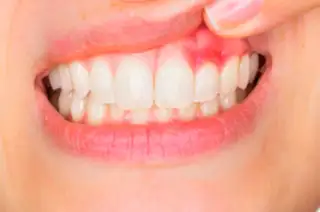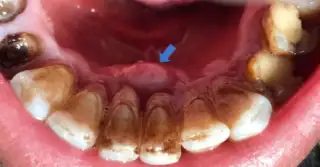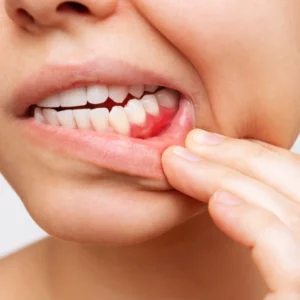Gum diseases affect a majority of the global population but are not taken seriously as dental health is still in the nascent stages. Most of the people affected by dental diseases don’t visit their dentist for a consultation or treatment which causes severe problems in later stages of life. This trend needs to change and it will start with people being well-read about dental problems, their causes and symptoms, and the best dental services.
The worrisome part is that periodontal disease gets severe with age. This is proved right by the data provided by the CDC (Centers for Disease Control and Prevention) which states that 70.1% of adults 65 years and older have periodontal disease. Another staggering data by CDC reveals that 47.2% of adults aged 30 years and older have some form of periodontal disease.
a dental care Houston lists some of the most common gum diseases with their causes, symptoms, and remedies.
Gingivitis
A mild form and one of the most common gum diseases, gingivitis is an inflammatory disease that causes redness, irritation, and inflammation of the gum around the teeth base. While gingivitis itself is a mild disease, if not taken care of, it can lead to more serious forms of gum disease and even the loss of teeth.
Gingivitis can be attributed to poor oral hygiene and it can be avoided by brushing your teeth at least twice daily along with flossing. Gingivitis happens due to the formation of plaque on your teeth that turns into tartar where bacteria can flourish. Once plaque has formed into tartar, it becomes difficult to remove the plaque. If not removed early, the bacteria start causing irritation to the gingiva which results in inflammation of the gums.
The symptoms of gingivitis include gum bleeding while flossing or brushing, receding gums, swollen gums, tender gums, dark red gums, and bad breath.
Chronic Periodontitis
Chronic Periodontitis is an inflammatory disease that is a severe gum infection that causes a lot of damage to the alveolar bone and periodontal connective tissues.
When dental plaque gets accumulated in large quantities, it results in chronic periodontitis. The most prevalent symptoms are bad breath, bleeding gums, pus between the teeth and gums, gums that are puffy or swollen, and bright red or purple which feels tender when they are touched.
The treatment for chronic periodontitis includes removing the deposits of bacteria and calculus from the subgingival environment using hand instruments or devices that are ultrasonic which can be used non-surgically or surgically.
Periodontal Abscess
A periodontal abscess occurs when the pocket of the puss develops in the gum tissues. This disease resembles a small ball that seems to be coming out of the gum which is swollen.
When there is a bacterium that causes infection between the gums and teeth. It is also caused when the plaque is not removed by flossing and brushing regularly. This can cause an infection or an abscess. Some of the symptoms are fever, severe and continuous pain in the area that has been affected, puss discharge, a loose tooth, pain while chewing, and sensitivity to cold or hot beverages.
The gum abscess is treated by draining it to remove any kind of debris in the periodontal pocket. Root planning or scaling may also be suggested by the Houston dentist which helps in removing tartar or plaque from beneath and above the gum line.
Perio-endo Lesion
Perio-endo lesion is a localized condition that can be attributed to bacterial infection caused by dental pulp, or periodontal tissues surrounding the tooth, or a combination of both. It takes the form of abscesses where the infection proliferates into the root canal of the tooth via the accessory canals.
The best treatment for perio-endo lesions is to undergo conventional endodontic therapy and should be followed by conventional periodontal therapy. In the event of the lesion becoming too severe for a treatment procedure, the only option that remains is the extraction of the affected tooth.
Gingival Recession
A gingival recession occurs when the tooth’s roots neck gets exposed due to severe or hard brushing, periodontitis, or other factors. This causes gingival tissue to recede. The main causes of gum recession are periodontal gum disease which causes the weakening of gums making them recede.
Another cause is genetics, people having thinner gums are prone to gum recession very easily. Tooth eruption is yet another reason. When a tooth comes outside of its bony housing which helps in protecting its root, the root can be exposed.
Gum recession in the milder stages can be treated by the process of deep cleaning of the area which has been affected. This is also known as root plaining or tooth scaling. In case the recession is too severe which cannot be cured by deep cleaning, the dentist will advise gum surgery for damage repairs.
Conclusion
As seen above, gum diseases need to be taken seriously instead of just delaying the visit to your dentist. If taken care of in time, gum diseases can be treated. Otherwise, it becomes too late and becomes severe, also causing additional complications. It is best to keep your oral hygiene in good shape and have regular visits to your dentist for the best dental care to ensure good oral health.













